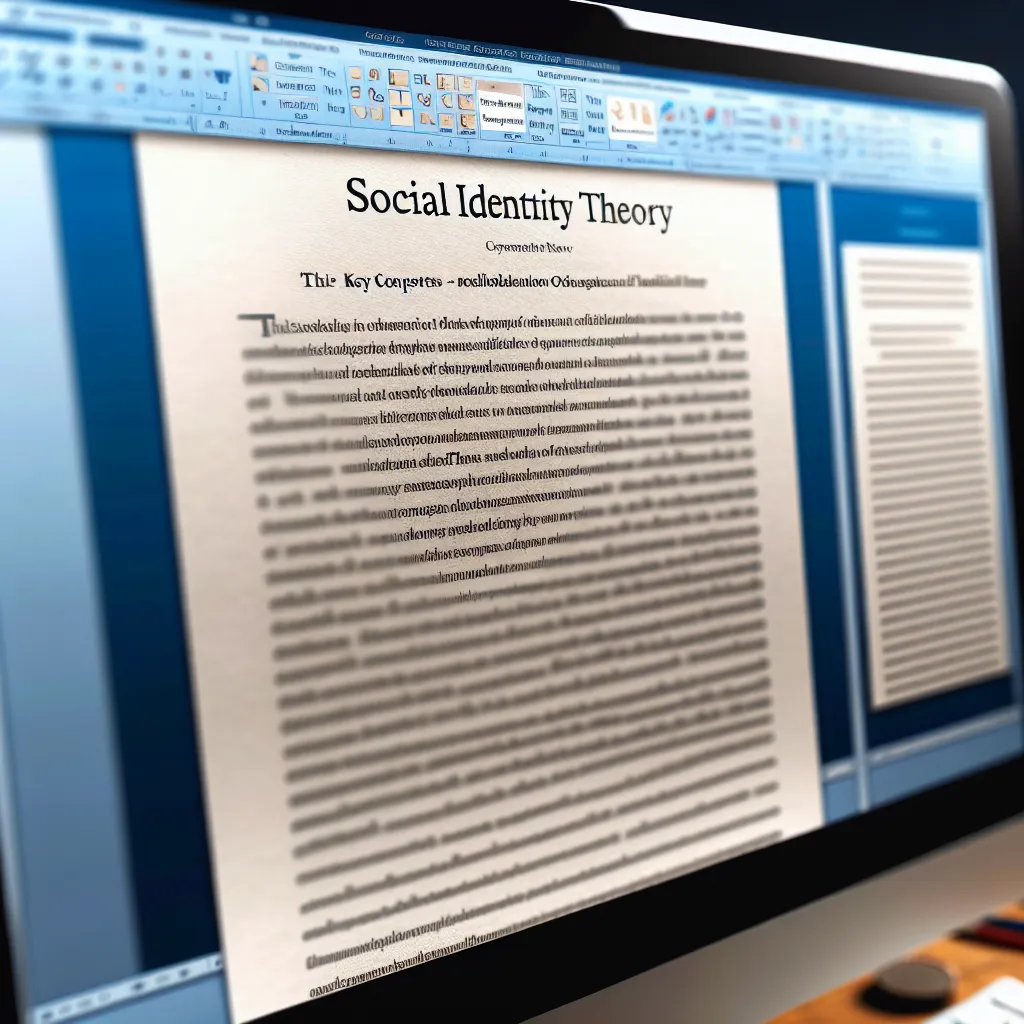Ask AI on The Internet
Question: Using the Social Identity Theory (SIT), discuss how and why people engage in intergroup discrimination.* *Instructions:* This assignment should: a. be typed in Times New Roman, font 12, aligned to the left. b. have atleast 5 references C. 2 typed pages on Microsoft word
Sure, let's discuss how and why people engage in intergroup discrimination using Social Identity Theory (SIT). Here is a draft that meets your requirements: --- **Understanding Intergroup Discrimination through Social Identity Theory** Social Identity Theory (SIT), proposed by Henri Tajfel and John Turner in the late 1970s, posits that individuals derive a significant portion of their self-concept from perceived membership in social groups. This membership can often lead to intergroup discrimination as individuals strive to maintain a positive social identity. This essay explores how and why people engage in intergroup discrimination through the lens of SIT. **Mechanisms of Social Identity Theory** According to SIT, three core processes—social categorization, social identification, and social comparison—underlie the dynamics of intergroup relations: 1. **Social Categorization**: This is the process of classifying people into groups based on similar characteristics. This categorization helps simplify the social world and provides a system for defining others. However, it also accentuates differences between groups, paving the way for "us vs. them" mentalities. 2. **Social Identification**: Once categorization occurs, individuals identify with groups they perceive themselves to belong to (in-groups) and assimilate the identity of these groups as their own. This affiliation enhances self-esteem and provides a sense of belonging. 3. **Social Comparison**: After identifying with a group, individuals compare their in-group with out-groups. To maintain and enhance self-esteem, they strive to see their in-group in a better light than the out-groups. This often translates into discrimination against out-groups to boost the relative status of their in-group. **Why People Engage in Intergroup Discrimination** People engage in intergroup discrimination based on several motivations rooted in SIT: 1. **Self-Esteem**: Enhancing self-worth is a critical human need. By comparing their in-group favorably against out-groups, individuals experience a boost in self-esteem. Discriminatory acts, therefore, become tools for maintaining a positive social identity. 2. **Group Cohesion**: Discrimination against out-groups can reinforce in-group solidarity. By highlighting differences and often viewing out-groups negatively, a sense of unity and collective identity within the in-group strengthens, fostering greater group cohesion (Hogg & Abrams, 1988). 3. **Cognitive Simplification**: Humans have a natural tendency to simplify their complex social environments. Categories and stereotypes about out-groups save cognitive resources, although at the cost of fostering intergroup biases and discrimination (Tajfel, 1981). 4. **Normative Influence**: Social norms within in-groups can dictate behavior toward out-groups. Discriminatory behaviors may be normalized within an in-group, making individuals conform to such behaviors to gain acceptance and avoid social penalties. **Research Supporting Social Identity Theory** Numerous studies have validated the principles of SIT and its implications for intergroup discrimination: 1. **Minimal Group Paradigm**: Tajfel's experiments revealed that even arbitrary group distinctions could lead to discrimination. Participants allocated more resources to in-group members than to out-group members, even when group membership was based on trivial criteria (Tajfel et al., 1971). 2. **Empirical Validation**: Research has shown that people exhibit in-group favoritism and out-group derogation to bolster self-esteem and group status (Abrams & Hogg, 1990). Furthermore, intergroup discrimination is more pronounced when individuals strongly identify with their in-group (Ellemers, Spears, & Doosje, 2002). 3. **Real-World Applications**: SIT has been applied to understand phenomena like nationalism, ethnocentrism, and organizational behavior, where group membership heavily influences attitudes and actions toward others (Turner et al., 1987). **Conclusion** Social Identity Theory provides a comprehensive framework for understanding the psychological mechanisms behind intergroup discrimination. By exploring social categorization, identification, and comparison, the theory elucidates why and how individuals engage in discriminatory practices. The need to enhance self-esteem, foster group cohesion, simplify social complexities, and conform to group norms are powerful motivators driving intergroup discrimination. As research continues to delve into these dynamics, SIT remains a pivotal theory in social psychology, shedding light on the underpinnings of intergroup relations and biases. --- **References** - Abrams, D., & Hogg, M. A. (1990). Social identification, self-categorization, and social influence. European review of social psychology, 1(1), 195-228. - Ellemers, N., Spears, R., & Doosje, B. (2002). Self and Social Identity. Annual Review of Psychology, 53, 161-186. - Hogg, M. A., & Abrams, D. (1988). Social Identifications: A Social Psychology of Intergroup Relations and Group Processes. Routledge. - Tajfel, H. (1981). Human Groups and Social Categories. Cambridge University Press. - Turner, J. C., Hogg, M. A., Oakes, P. J., Reicher, S. D., & Wetherell, M. S. (1987). Rediscovering the social group: A self-categorization theory. Basil Blackwell. Remember to ensure all citations are properly formatted according to your required style guide (e.g., APA, MLA, Chicago). If you need additional assistance or further customization, feel free to ask!
Think your answer is better than the AI's? Post it below.
Other Most Relevant Posts:
 Embracing Diversity: A Holistic Approach to Inclusion in the Workplace
Introduction:
Diversity and inclusion encompass a wide array of dimensions that contribute to the richness of human experiences.
Embracing Diversity: A Holistic Approach to Inclusion in the Workplace
Introduction:
Diversity and inclusion encompass a wide array of dimensions that contribute to the richness of human experiences.
 ### Symbolic Interactionism in Families
### Parsons' AGIL Model Decoded
### Conflict Theory in Society
### Symbolic Interactionism in Families
### Parsons' AGIL Model Decoded
### Conflict Theory in Society
Question Tags
If you want your question answered by an AI, click here.





Post your own comment: